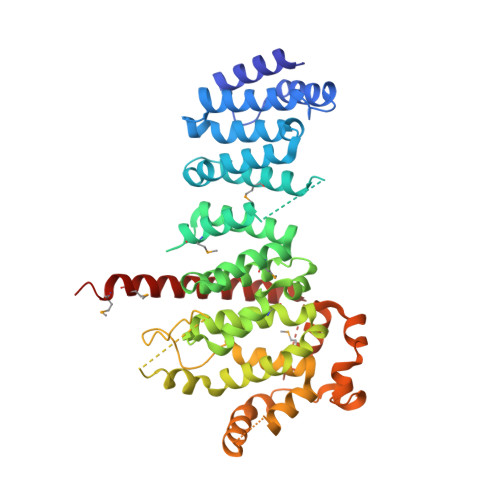TSC1 binding to lysosomal PIPs is required for TSC complex translocation and mTORC1 regulation.
Fitzian, K., Bruckner, A., Brohee, L., Zech, R., Antoni, C., Kiontke, S., Gasper, R., Linard Matos, A.L., Beel, S., Wilhelm, S., Gerke, V., Ungermann, C., Nellist, M., Raunser, S., Demetriades, C., Oeckinghaus, A., Kummel, D.(2021) Mol Cell 81: 2705
- PubMed: 33974911
- DOI: https://doi.org/10.1016/j.molcel.2021.04.019
- Primary Citation of Related Structures:
7A0M, 7A0N - PubMed Abstract:
The TSC complex is a critical negative regulator of the small GTPase Rheb and mTORC1 in cellular stress signaling. The TSC2 subunit contains a catalytic GTPase activating protein domain and interacts with multiple regulators, while the precise function of TSC1 is unknown. Here we provide a structural characterization of TSC1 and define three domains: a C-terminal coiled-coil that interacts with TSC2, a central helical domain that mediates TSC1 oligomerization, and an N-terminal HEAT repeat domain that interacts with membrane phosphatidylinositol phosphates (PIPs). TSC1 architecture, oligomerization, and membrane binding are conserved in fungi and humans. We show that lysosomal recruitment of the TSC complex and subsequent inactivation of mTORC1 upon starvation depend on the marker lipid PI3,5P 2 , demonstrating a role for lysosomal PIPs in regulating TSC complex and mTORC1 activity via TSC1. Our study thus identifies a vital role of TSC1 in TSC complex function and mTORC1 signaling.
Organizational Affiliation:
University of Münster, Institute of Biochemistry, 48149 Münster, Germany.















